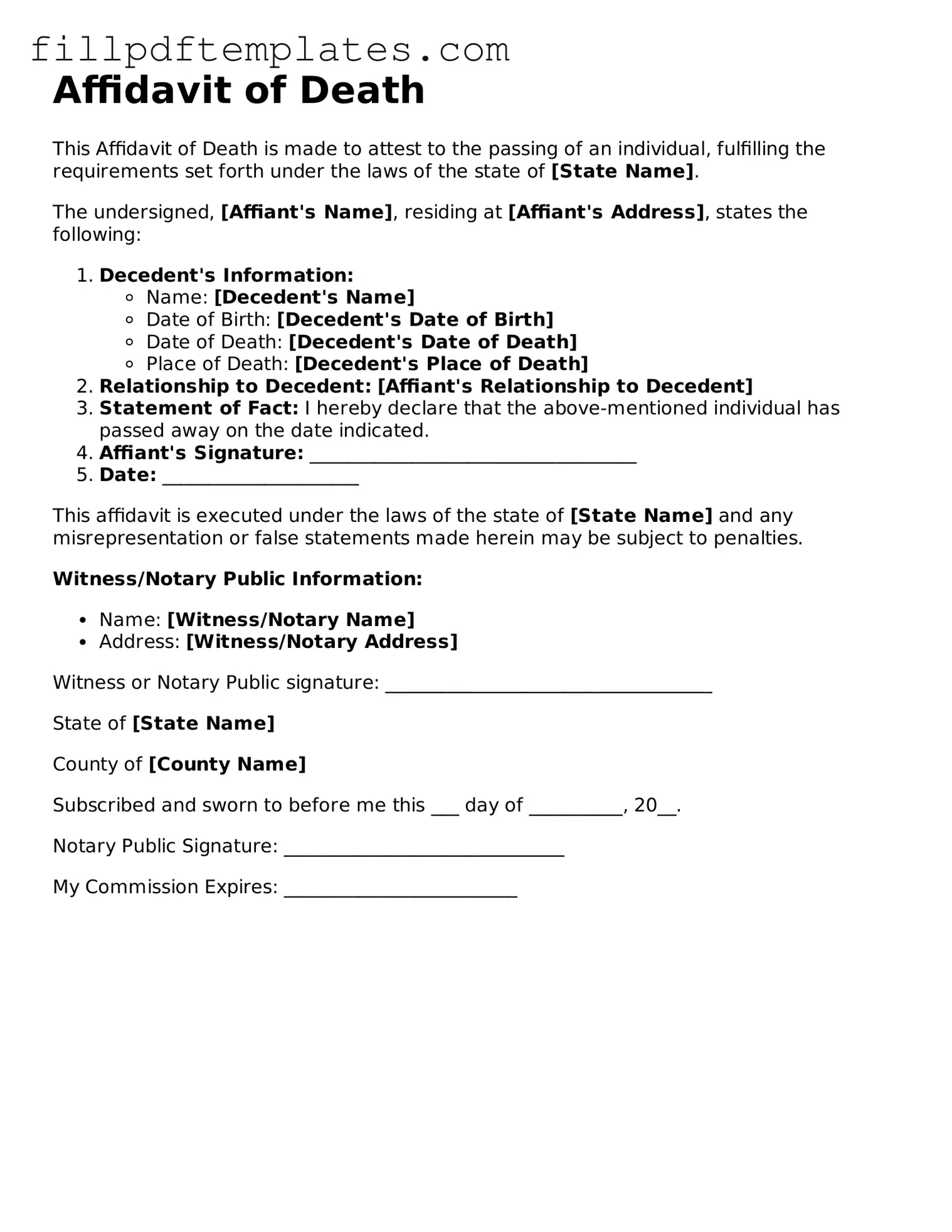Affidavit of Death
This Affidavit of Death is made to attest to the passing of an individual, fulfilling the requirements set forth under the laws of the state of [State Name].
The undersigned, [Affiant's Name], residing at [Affiant's Address], states the following:
- Decedent's Information:
- Name: [Decedent's Name]
- Date of Birth: [Decedent's Date of Birth]
- Date of Death: [Decedent's Date of Death]
- Place of Death: [Decedent's Place of Death]
- Relationship to Decedent: [Affiant's Relationship to Decedent]
- Statement of Fact: I hereby declare that the above-mentioned individual has passed away on the date indicated.
- Affiant's Signature: ___________________________________
- Date: _____________________
This affidavit is executed under the laws of the state of [State Name] and any misrepresentation or false statements made herein may be subject to penalties.
Witness/Notary Public Information:
- Name: [Witness/Notary Name]
- Address: [Witness/Notary Address]
Witness or Notary Public signature: ___________________________________
State of [State Name]
County of [County Name]
Subscribed and sworn to before me this ___ day of __________, 20__.
Notary Public Signature: ______________________________
My Commission Expires: _________________________
